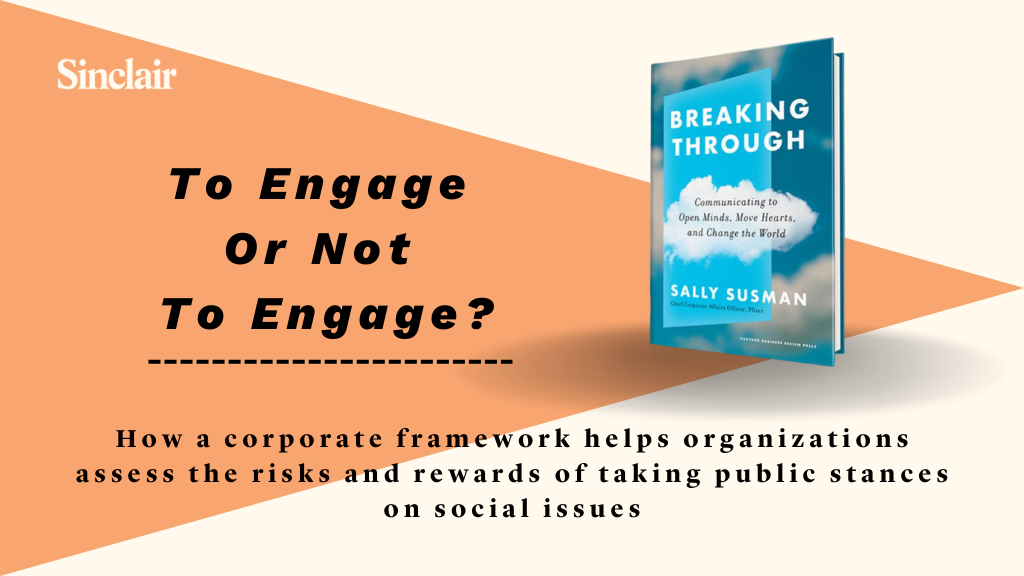
How a corporate framework helps organizations assess the risks and rewards of taking public stances on social issues
Now, more than ever, organizations face the challenge of addressing sensitive issues that may impact their stakeholders. From social and environmental concerns to political and economic issues, taking a stance on every issue can be risky. Having a corporate framework is essential for organizations to make informed decisions about which issues to address, which to avoid and how to engage with them.
A corporate framework is a set of guidelines that an organization can use to determine when and how to engage with social, political and environmental issues. It helps organizations evaluate whether an issue aligns with its mission and values, how it impacts stakeholders, members or customers and what the available options are for engagement. Sally Susman, Pfizer’s Chief Corporate Affairs Officer, outlines a framework companies can use to address social issues in her new book, “Breaking Through.”
Not sure where to start? Here are the key elements Susman highlights in her corporate framework:
- Organizational values: Identify and articulate the organization’s core values. Use them to guide decisions and actions. Consider if the issue at hand aligns with these core values.
- Mission: An organization’s mission is its reason for being. Define the organization’s mission and how it pertains to the organization’s short and long-term goals. Evaluate if the issue relates to the mission and if taking a stance helps or hinders achieving the aforementioned goals.
- Stakeholder impact: Consider how the issue affects stakeholders, including customers, employees, suppliers, and the community. Evaluate if taking a stance positively or negatively impacts stakeholders and if the organization has a responsibility to act.
- Choices for engagement: Consider options for engagement, such as speaking out publicly, engaging with policymakers or working with stakeholders. Evaluate which engagement option aligns with your organization’s mission, vision and core values.
- Price for inaction: Consider potential consequences of not taking a stance on the issue, such as harm to reputation, loss of customers or revenue, or negative impact on the ability to achieve the mission. This could also be applied to premature action as well. Jumping the gun on an issue by taking a stance too early, or by aligning your organization with an issue that doesn’t meet company values, can pose just as much of a threat as inaction.
It’s important to note that a corporate framework is not a one-size-fits-all solution. Each organization is unique and will face different challenges and opportunities.
Tailor the framework to meet the organization’s specific needs and regularly review it for relevance and effectiveness.
In today’s world, where businesses are expected to take a stance on certain issues, having a corporate framework can help organizations make a positive impact while also mitigating potential risks.
If your organization hasn’t established a framework, it could be worth considering. Let us know your thoughts and we can talk about how it might help your business. Get in touch with us to learn more.



